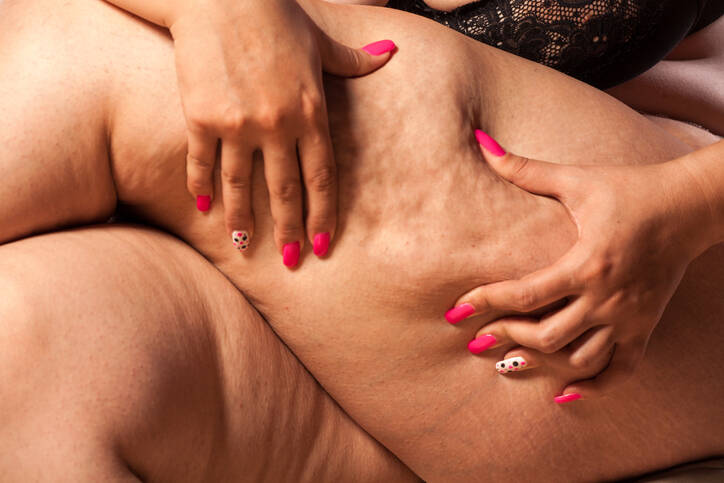- Rossi, Ana Beatris R; Vergnanini, Andre Luiz (2000). "Cellulite: A review". Journal of the European Academy of Dermatology and Venereology. 14 (4): 251–62. doi:10.1046/j.1468-3083.2000.00016.x. PMID 11204512. S2CID 18504078.
- Pinna, K. (2007). Nutrition and diet therapy. Belmont, CA: Wadsworth. p. 178.
- Avram, Mathew M (2004). "Cellulite: A review of its physiology and treatment". Journal of Cosmetic and Laser Therapy. 6 (4): 181–5. CiteSeerX 10.1.1.506.7997.
- Janda, K; Tomikowska, A (2014). "Cellulite - causes, prevention, treatment". Annales Academiae Medicae Stetinensis. 60 (1): 29–38. PMID 25518090.
- Terranova, F.; Berardesca, E.; Maibach, H. (2006). "Cellulite: Nature and aetiopathogenesis". International Journal of Cosmetic Science. 28 (3): 157–67.
- Emanuele, E; Bertona, M; Geroldi, D (2010). "A multilocus candidate approach identifies ACE and HIF1A as susceptibility genes for cellulite". Journal of the European Academy of Dermatology and Venereology. 24 (8): 930–5.
- Rossi, Anthony M.; Katz, Bruce E. (2014). "A Modern Approach to the Treatment of Cellulite". Dermatologic Clinics. 32 (1): 51–9.
- Juhász M, Korta D, Mesinkovska NA (2018). "A Review of the Use of Ultrasound for Skin Tightening, Body Contouring, and Cellulite Reduction in Dermatology". Dermatol Surg. 44 (7): 949–963.
- Gold, Michael H. (2012). "Cellulite – an overview of non-invasive therapy with energy-based systems". Journal der Deutschen Dermatologischen Gesellschaft. 10 (8): 553–8.
- Friedmann DP, Vick GL, Mishra V (2017). "Cellulite: a review with a focus on subcision". Clin Cosmet Investig Dermatol. 10: 17–23.
- Wanner, M; Avram, M (2008). "An evidence-based assessment of treatments for cellulite". Journal of Drugs in Dermatology. 7 (4): 341–5. PMID 18459514.
- Nürnberger, F.; Müller, G. (1978). "So-Called Cellulite: An Invented Disease". The Journal of Dermatologic Surgery and Oncology. 4 (3): 221–9.
How is cellulite created and what does it look like? Can it be treated?

Photo source: Getty images
Cellulite treatment: medication, exercise, diet and more
Show more









